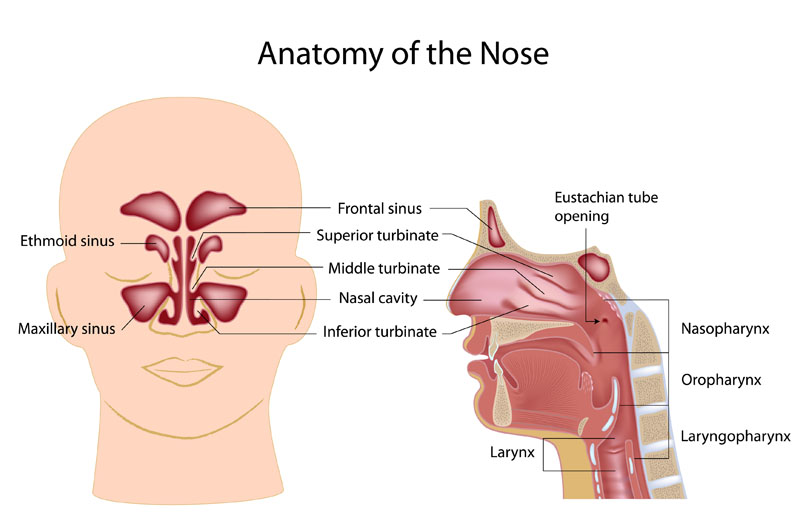
- The nose acts mainly as an air-conditioner to warm, clean and moisten the air entering the lungs. It also detects smells.
- The nose is an air passage that runs from the nostrils, over the roof of the mouth, to the top of the throat.
- The front part of the nose immediately behind the nostrils is divided into two compartments by a piece of cartilage called the nasal septum. The nasal septum is often bent to one side in ‘normal’ people without problems.
- The two compartments open into the nasal cavity that is formed by the bones at the base of the brain, the walls of the upper jaw and the roof of the mouth. On each side of the cavity are thick shelves called turbinates. These increase the surface area available for moistening air.
- The nerve cells that detect smell are in the roof of the nasal passage, just below the brain.
- The sinuses are air-filled cavities that lie within the bones surrounding the nose. They are connected to the nose by narrow holes. Their function is unknown.
